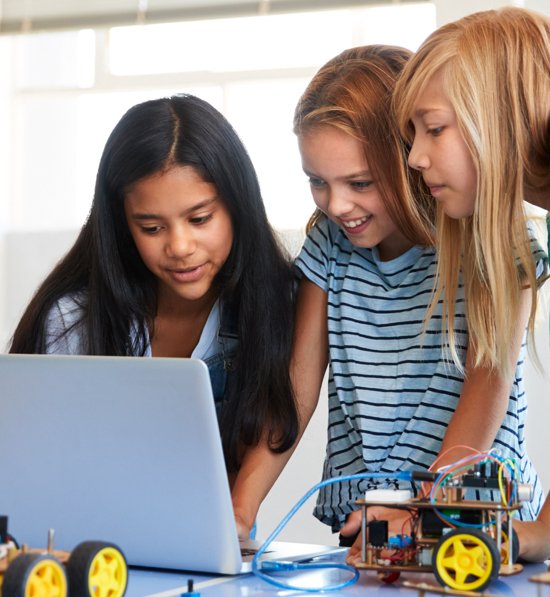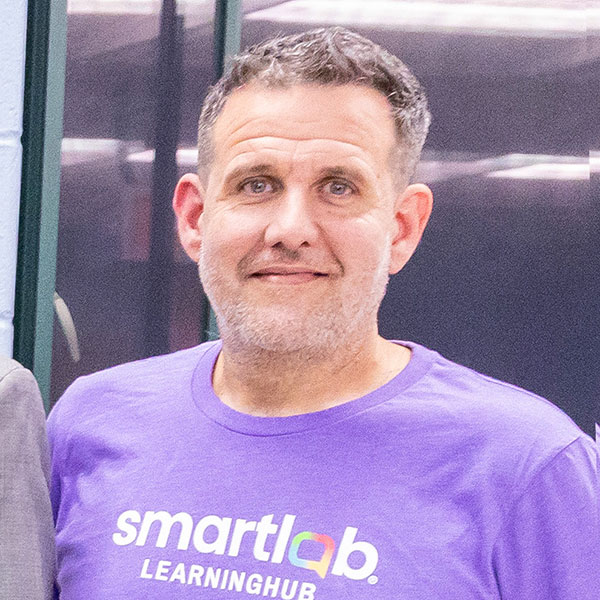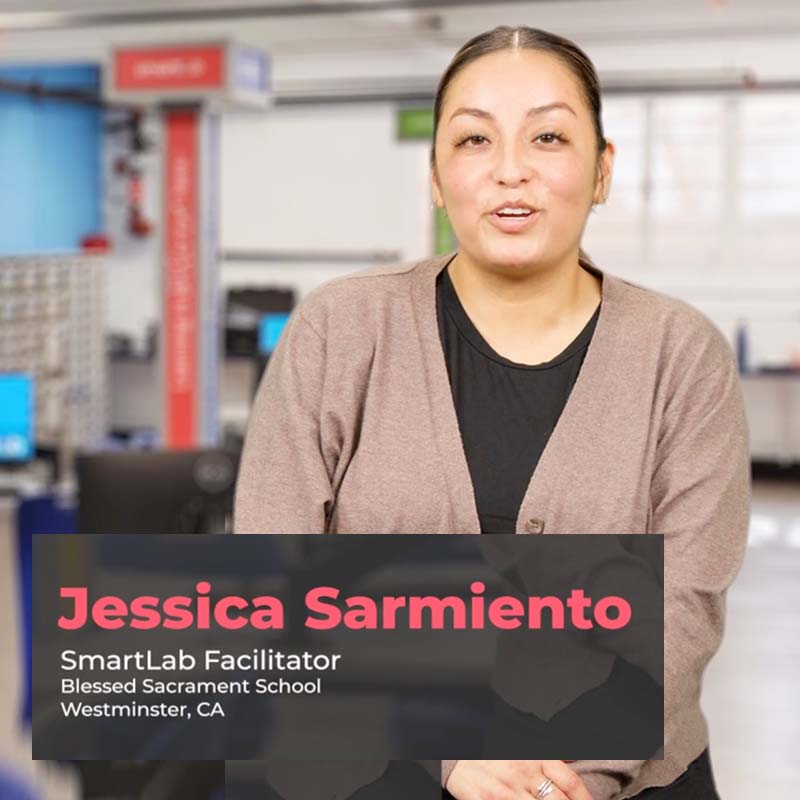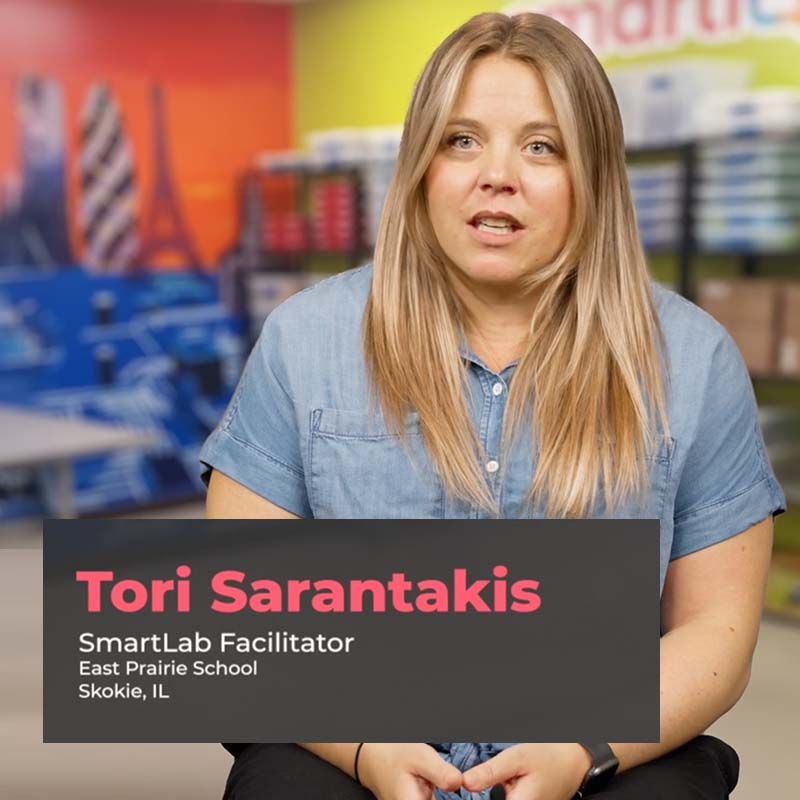Student engagement is at levels I have never seen in my 23 years of teaching. Students love the lab and are constantly asking if they can come down in their free time to continue working with Ukits, or Engino, etc. I’ve never been busier as a teacher, but also have never had more fun. It’s encouraged me to gladly take work home and get more proficient in areas such as coding and circuitry. I see myself as a lifelong learner, and this lab not only meets the needs of my students but also fulfills my own growth as a facilitator and person. I appreciate my administration for investing in this lab and appreciate SmartLab for offering such an incredible product!!!
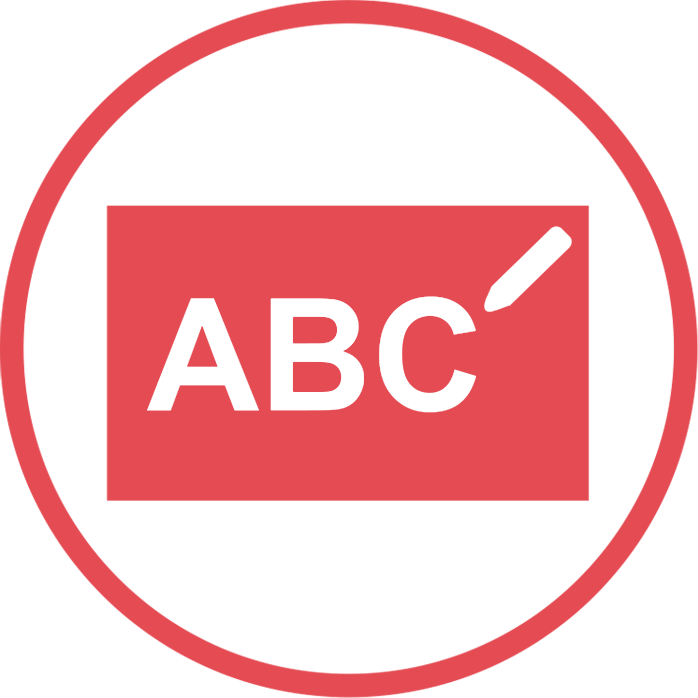
Education and Training
The Education and Training career pathway is evolving, driven by technological advancements, new learning models, and the growing importance of STEM (Science, Technology, Engineering, and Mathematics) education. The future of this pathway is characterized by an increasing demand for STEM-literate educators, the integration of digital tools, and a focus on equipping students with skills for the modern workforce. STEM knowledge and skills are becoming essential for future educators to foster innovation in learning environments and prepare students for careers in a tech-driven world.

Early exposure to the Education and Training
career pathway benefits students
Early exposure to the Education and Training industry pathway gives elementary students a unique opportunity to understand the critical role education plays in shaping individuals and society as a whole. They begin to see how teaching, mentoring, and skill-building are the foundation of all career success, regardless of the field they pursue. By learning about the diversity of roles within education, students can appreciate how educators create lasting impact, and they develop essential life skills such as empathy, communication, and leadership that will benefit them throughout their personal and professional lives.
Fostering a Love for Learning and Teaching
Early exposure to the education field helps students see the joy and value of teaching others. Whether through peer collaboration or helping younger students, elementary learners can discover that education is not just about absorbing information, but also about sharing it. This can ignite a passion for teaching, mentoring, and lifelong learning.
Developing Communication and Leadership Skills
Teaching requires clear communication, patience, and leadership. As students explore the education pathway, they practice presenting ideas, explaining concepts to peers, and organizing activities. These experiences develop their public speaking, leadership, and interpersonal skills—essential in both academic settings and future careers.
Building Empathy and Emotional Intelligence
Educators play a critical role in shaping emotional and social development. By learning about this career path, students start to develop empathy and an understanding of how different learning needs and backgrounds impact educational success. This focus on emotional intelligence encourages students to become more compassionate and supportive in their interactions with others.
Understanding the Role of Mentorship and Guidance
Education isn’t just about teaching subjects—it’s about providing guidance, mentorship, and encouragement. Introducing students to this pathway shows them the importance of being role models and mentors, not only in schools but in all areas of life. This can inspire them to pursue leadership roles in a variety of fields where they can positively influence others.
Exploring the Diversity of Educational Roles
The education and training pathway extends far beyond classroom teaching. Students can be introduced to the broad spectrum of roles within the industry, such as educational administrators, counselors, instructional designers, corporate trainers, and more. Early exposure helps them understand that education is a dynamic field with opportunities for both direct teaching and behind-the-scenes roles that support learning systems.
Connecting Education with Real-World Impact
Education shapes future generations and the workforce. Teaching students about this field early helps them appreciate how educators influence everything from individual student growth to societal advancements. This insight fosters a sense of responsibility and inspires students to consider how they can contribute to the future of education and training systems.
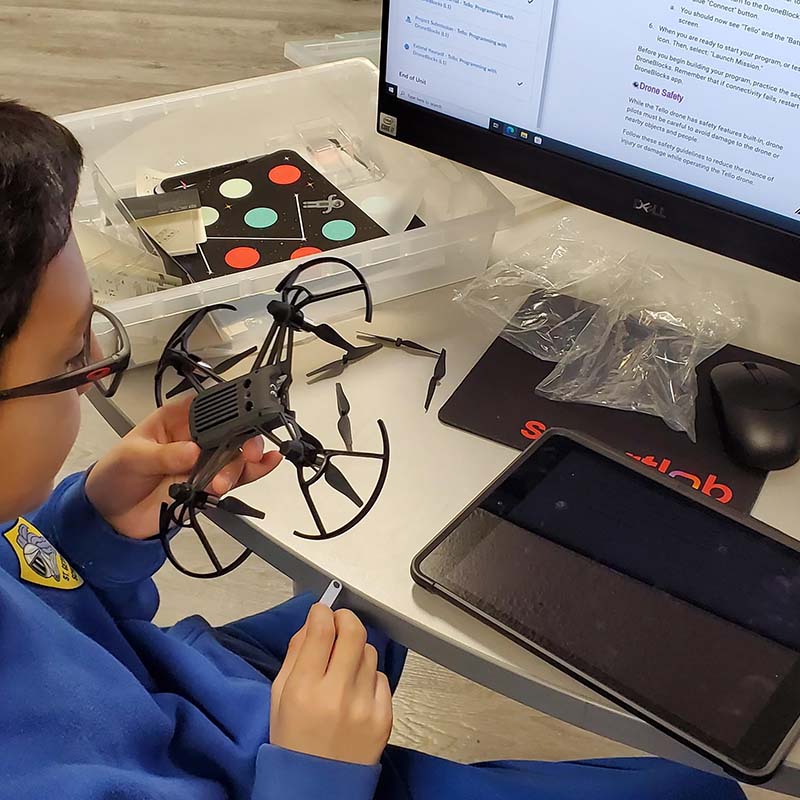
In conclusion, the future of the Education and Training career pathway will be deeply intertwined with STEM, as STEM subjects drive innovations in teaching, technology integration, and workforce readiness. As demand for STEM educators rises, knowledge of these subjects will be critical for preparing students for future careers in an increasingly technology-driven world. The skills developed through STEM education—problem-solving, creativity, technological proficiency, and data literacy—are essential for both educators and students as they navigate the evolving demands of modern education.
Key skills built through STEM in Education and Training
STEM education teaches students to analyze data, conduct experiments, and solve complex problems—skills that are critical for optimizing resource use, improving crop yields, and developing sustainable energy systems.
Technological Proficiency
STEM-trained educators are proficient in using educational technologies, from coding platforms and robotics kits to virtual reality (VR) and augmented reality (AR) tools. This proficiency is critical for teaching future-ready skills to students.
Innovation and Creativity
STEM educators foster creativity by encouraging students to develop innovative solutions to real-world problems. This prepares students not only for STEM careers but also for any field that values creativity, innovation, and entrepreneurship.
Data Analysis and Critical Thinking
STEM education trains teachers and students in the use of data to make informed decisions. In an era where data is driving industries, these analytical skills are crucial for educators preparing students to enter various STEM and non-STEM careers
Collaboration and Communication
Many STEM-related projects require teamwork and communication. Educators help students learn how to collaborate effectively, share ideas, and present their findings—skills that are essential for success in any career pathway, particularly those in STEM fields where interdisciplinary work is common.
Hear from our happy clients.
Ready to start planning your SmartLab?
We’re excited to hear from you. Let’s change the way your students engage with math and science–in and outside the classroom.
